A brave new world
What a tumultuous six months it has been. From a spring full of promise for record farm gate prices…to drought, lock down, and a sharp reduction in prices.
Apart from the early birds, it has been a disappointing season for many sheep and beef farmers. Drought is still impacting heavily on costs and stock wintering capacity in many areas, and slow processing is having the same effects, especially in Southland/Otago.
What will unfold over the next twelve months?
The positives
- Being labelled an essential industry took the pain out of lock down, and we will survive, unlike many businesses.
- Government and the media have had to admit that “farming is still the backbone of the economy”. Perhaps the propaganda attack on us deplorables will slow down?
- Farmers are handling crises better than ever. There is a greater variety of supplementary feeds, and sheep farmers are becoming more confident in using them.
- Banks were beginning to shun farming. Perhaps this will change their tune?
- Some costs are lower, especially interest rates and fuel.
- There will be reduced supply of sheep meat and beef from both NZ and Australia next season. My guess is that the NZ sheep population will be down at least a million from 2019, and national lambing percentage will be significantly lower. Add in a low number of hogget lambs, and the number available for export will be reduced by two to three million in 2020-21. And parts of Australia have had more rain in the first four months of this year than since 1924. Farmers there will be rebuilding stock numbers after three to five years of drought. Reduced supply will help support higher farm gate prices.
- New Zealand has come out of this health crisis with an enhanced international reputation. Let’s leverage that in the promotion of our food brands.
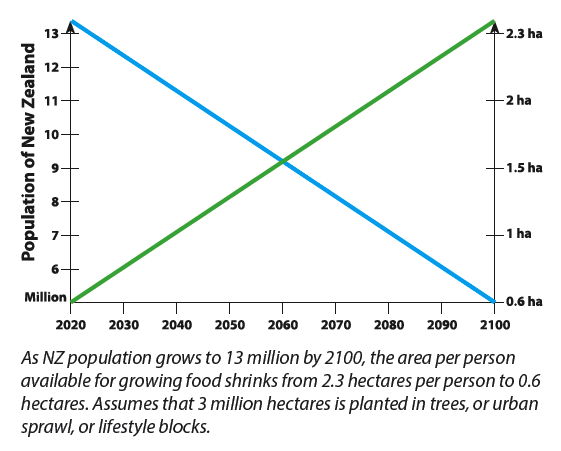
The negatives
- New Zealand has become more of a “dependent” economy, with government’s symbolic gesture of banning exploration for oil and gas. We are also dependent for most of our banking and vehicles, and half our food.
- Internal costs in NZ have inflated out of hand. Easy credit has allowed us to bid up the price of houses and farm land. Total debt in NZ early this year was $538 billion, against a nominal GDP of $320 million. But GDP is going to fall off a cliff, while debt is going to balloon. Sheep and beef farmer debt is $15 billion, dairy farmer debt $40 billion. Government debt was relatively low at $58 billion. Private debt is the killer.
- Trips to Japan have shown me the effects of thirty years of deflation. People there have low expectations of ever increasing prosperity, such a contrast to New Zealand, where the “entitlement” attitude is now entrenched. Japanese workers in a factory processing NZ lamb casings are paid $11 per hour! Meantime, our politicians continually undermine our export industries while turning a blind eye to rampant inflation. Somehow the official statisticians have kept construction and compliance costs out of the quarterly inflation figures. Those costs must be among the highest in the world.
- Not enough publicity has been given to the contradiction in supporting tourism, with all that carbon burnt crossing the Pacific, while blaming farming for “half of NZ’s GHG emissions”(a blatant exaggeration, given the correct, “warming” measurement of methane, and the recent re-evaluation of nitrous oxide, measured at just one third of previous guesstimates for sheep). Tourism will be exposed as much less important than the propaganda suggested, as New Zealanders stay at home.
- Will surviving businesses have to support social welfare for unemployed people who won’t leave the cities to take over basic jobs from temporary migrants such as picking fruit and milking cows?
- Negative productivity is a sad story for most of the NZ economy.
- Double standards have pervaded public opinion about “caring for the environment”. Despite 80% of cities and towns not complying with sewage and storm water regulations, the pundits look beyond the sewage on their own beaches to blame ruminants. Even though ruminants evolved 90 million years ago.
- Fish and Game is about to get its comeuppance. A recent TV campaign claiming that 75% of native fish species are endangered ended with the image of a dairy cow…that image should have been a trout.
- Carbon sinks don’t change behaviour. NZ allows 100% offset, California just 8%, soon to drop to 4%.
Reset
- After the Napier earthquake in 1931, the government appointed an architect and an engineer to redesign the city. Napier was rebuilt in one year! And now has a week each year to celebrate its Art Deco architecture. What a contrast to Christchurch, still rebuilding nine years later.
- Shovel ready projects should include at least ten irrigation schemes, some of which have been held up for decades. China can build a hospital in six days. But New Zealand has lost its dynamo. Think about our 94,000km of roads, most constructed before the need for public consultation and endless engineers’ reports. What percentage of our roads are an environmental disaster? Nature heals fast.
- This is a good opportunity to clean out unnecessary bureaucracy. Bureaucrats and regulators have been breeding. Their salaries and wages should be reduced in line with the reductions which will have to happen in the private sector.
- All cost, no benefit? The danger of the Budget’s “borrow and hope” strategy is that the NZ economy will not achieve the productivity improvement so urgently needed.
The debt trap
The Wairere August newsletter quoted Forex executive Phillip Poppe, “that interest rates would be low forever, because world debt was three times world GDP.” World debt is now expanding fast, and GDP is shrinking just as fast.
Some economist in the future is going to point to economic mismanagement around the world since 1970. Governments, businesses, home owners and consumers have all been captured by banks creating more and more credit at lower and lower interest rates. The net result is that asset prices have become hugely inflated, and expectations of capital growth have been fuelled by government assistance to keep the treadmill running. How is this all going to end?
Lock down
If you need inspiration to keep going, think of Nelson Mandela, locked down for 27 years. Mandela had been a heavyweight boxer, so he disciplined himself to train early in the morning. There is increasing commentary about mental health in New Zealand, but our environment is so much more benign than most countries in the world. Perhaps we have to relearn resilience, lessons that our forbears learned during world wars and the Great Depression?
The entitlement society
New Zealand has prided itself on being free of corruption. But that has been changing. Favouritism at the top level of business, including the government’s investments in Air New Zealand and in building supplies via ACC’s investment portfolio, inflates the cost of travel and infrastructure. At a lower level, absenteeism of ten percent plus is a major problem at some of our meat processing plants. I’ve heard of farmers on standby, waiting for a call at 6.30am as to whether their cattle can be trucked that day, after the processing plant management find out how many people have turned up to work. Recent legislation allowing three days sick pay after six months work is now treated by some processing staff as an addition to annual leave.
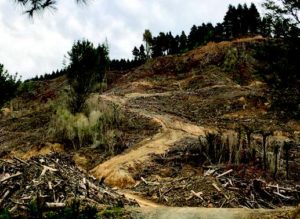
This is supposed to be sustainable, logging 17 times in 500 years.
The MIA has tried for several years to get government permission to allow extra migrant workers, but delays have prevented implementation. I’ve been told that some sheep processing chains could operate twenty percent faster, and create a ten dollar greater margin per lamb.
Compliance costs have rocketed to extraordinary levels, all to provide income for an ever increasing army of bureaucrats. New Zealand urgently needs a Common Sense political party. There is a lack of balance in public policy. Sir Roger Douglas has just co-written a paper entitled “The March Towards Poverty”. Primary Industry is one of very few sectors in New Zealand which has improved productivity at a rate comparable to other OECD countries. A lot needs to change in the internal economy.
DEFENDING FARMING I apologise for the large content in this newsletter about broad economic and political issues, but NZ farming has been under continual attack by government and media on a broad front: GHG emissions, water quality, and biodiversity. Ruminant GHG emissions have been grossly over exaggerated. NZ’s water quality is already rated as among the seven best countries in the world. What’s the prize for improving on that? Biodiversity has been improving for many species as farming area has shrunk. Being cast as a scapegoat has seriously dented the morale of farmers. Fighting this image requires a personal sacrifice of time and money. Our 50shadesofgreen group has raised awareness around the carbon sink fallacy, but like all politics, it can be hard work for little or no effect.
Client Success Stories
Back to the knitting. The common thread in these stories is a continual focus on improving the basics of high productivity: good feeding of stock with high genetic merit.
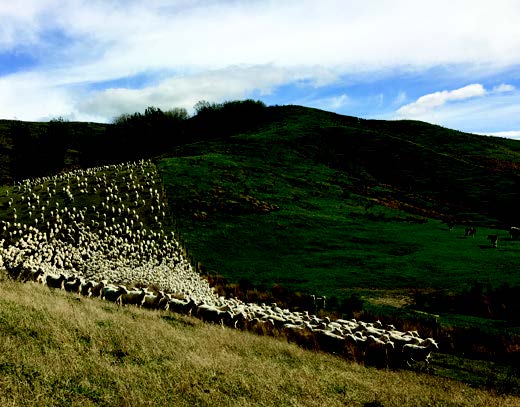
Wairere bred ewes at Derek Neal’s Taki Taki property.
Derek and Elsje Neal, Wairarapa.
“This year has been a phenomenal farming year, especially with sheep productivity and prices. One key benchmark for me is kgs of carcass produced per hectare. I’ve been achieving 315 to 325 kgs per hectare by running a July stocking rate on hill country of 12su per hectare average for the last 5 years. I set stock at 9.5 ewes per hectare from lambing to weaning on my main breeding farm, which is broken hill country rising to 500 metres above sea level. The acquisition of two smaller farms over the past thirty years, and ongoing development, gave me 24% finishing country. Ewes are set stocked at 10 per hectare on the easier hill country there.
Cattle policy has been bulls, peaking at 891. Small paddocks allow grazing control by the ewes and 200 R2 Friesian bulls. The 5,552 ewes plus hoggets produced 9,049 lambs this spring, with Ovastim used on the ewes. 150% overall from all the ewes, with 152% from the home steep hill country ewes. I took out contracts to supply 5,000 through to end of April, and dropped average carcass weight from 19 to 18.4kg. But my contract price per kg was well ahead of schedule on the day. The net result will be an EFS of $1,018 per hectare.
Wairere genetics have made a big difference. After winning the Wairarapa Farmer of the Year in 1997, while I was using Wairere Border/Romney rams, I switched to composite sires from outside the Wairarapa. Despite regular hunting trips on Wairere, just fifteen minutes away, and observing the sheep, I persisted with an alternative genetics program for twelve years. Since switching back to Wairere Romneys I’ve enjoyed:
- A steady lift in lambing percentage
- Increased carcass weight, despite finishing more lambs and more multiples
- Pleasure from looking at my sheep, now robust and even
- More profit
What capped off a good season was when Andrew Puddy found a buyer for a line of 918 capital stock two tooths at $318 net in January.
The best sheep genetics that I’ve used in 35 years have been bred on my doorstep, in the same windswept, cool climate and broken hill country that I work with on my home farm.”
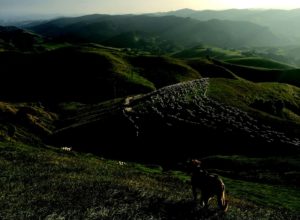
Derek Neal believes in making grass grow. He doesn’t hesitate to use nitrogen fertiliser.
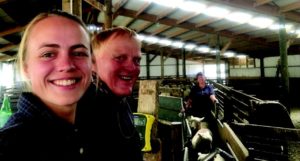
Daughter Bronwyn with Derek Neal, and Elsje in the drafting race.
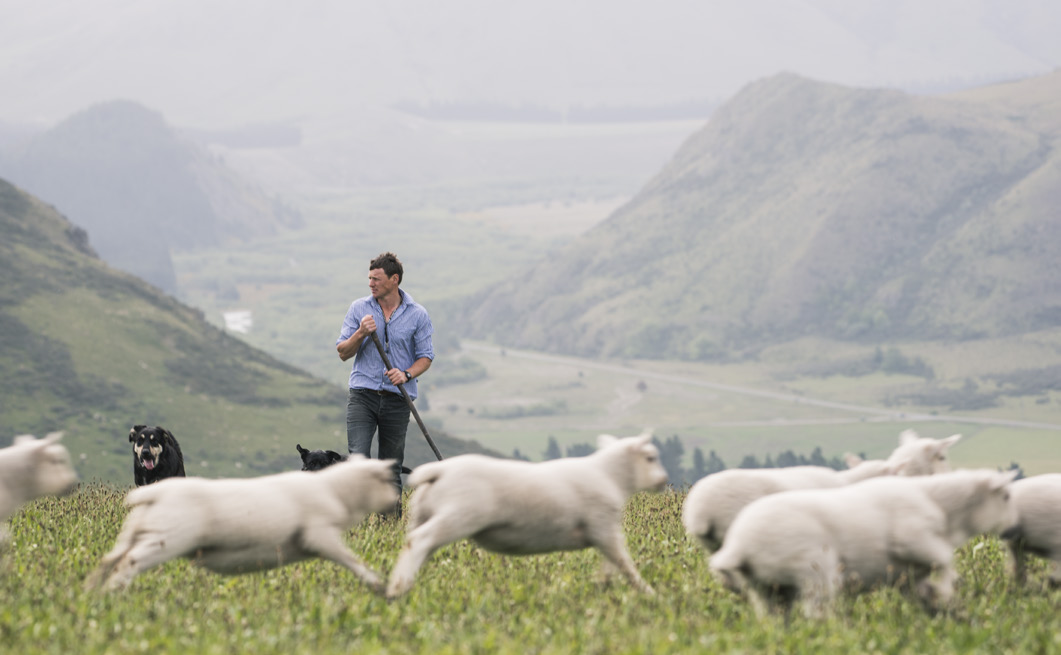
Bert Oliver with high altitude Wairere bred Kumanu lambs.
John Chapman and Bert Oliver, Inverary Station, South Canterbury.
Inverary Station, Mid Canterbury. “Selling a 270 hectares irrigated finishing block on the Canterbury Plains twelve years ago has made us focus on improving productivity on the 4,500 hectare station. Ongoing development and a breed change have combined to give us more meat out the gate than we had with the lowland farm and Station combined!
We have developed a further 250 hectares into red clover and ryegrass on a plateau at 750 metres above sea level. That gives us 500 hectares of high octane feed. On the tussock country we have found that more subdivision allows much better control of the browntop dominant sward. It’s difficult to keep control in mid spring, when pasture growth rate takes off. Some summers we don’t graze two or three blocks. But the most exciting discovery over the last several years has been the pasture growth rate achievable off northerly faces where a CrossSlot drill has sown red clover and cocksfoot after eliminating the browntop thatch. We’ve measured up to 20,000kgDM/ ha in the first year, with growth in August ahead of the Canterbury Plains, because of the warm, northerly aspect, even at high altitude. This has allowed earlier lambing by two to three weeks. In a dry spring the high quality sward also allows weaning at 55 days at 17kg live weight average, and growing those lambs on well at 250g/day. We did a trial with three weight groups of lambs: 16-20kg, 20-24, 24-28. There was no difference in the daily gain.
Early weaning allows sale of cast for age ewes to the works at a time when they are worth more too.
We’ve been running 550 to 600 Angus cows, breeding our own bulls and selling some, and plan to increase the herd to 800. On the sheep side we switched out of Halfbreds twenty years ago, because of a footrot problem. Then nine years ago we bought sixty Wairere ram lambs to put over the 6,000 Perendale ewes. That has been a success story. Lambing has averaged 140% over the past three years, and we have achieved average carcass weight of 17.5kg in a season. Sometimes the season dictates that we sell some store. The ewes bounce back after weaning, with the mixed age routinely scanning 175%. The two tooths are more variable, but have scanned up to 175. We are absolutely delighted with the improvement, and the consistency of performance.
We owe Chris Mulvaney of Stockcare a big vote of thanks for helping us with body condition scoring, and scanning index. He is an unsung hero of sheep farming in New Zealand for introducing those concepts to our industry. Chris and John(farm owner) have also put huge effort into developing the Kumanu brand, which guarantees animal welfare and gentle handling throughout the lamb’s life. Kumanu has achieved a premium for suppliers, not big, but you have to start somewhere.
This year we’ve been lucky to enjoy a better season than most of the country. Taking out a contract for lamb supply at $8.30/kg through to February was a great move too. For the first time, the best 300 ewe hoggets, averaging 50kg, are being mated to Merino rams. This move will further enhance the productivity off what used to be a traditional high country run. The research that we’ve done on farm, with 36 pasture cages, is bearing fruit. And we have legume trials ongoing with Caucasian clover as well as red and sub clover, monitored by Lincoln University’s Derrick Moot”.
John: “The past three or four years have been my most enjoyable on Inverary, as I’ve stepped back from the day to day operations and studied how we can better use our resources. We’re not missing that irrigated finishing farm at all.”
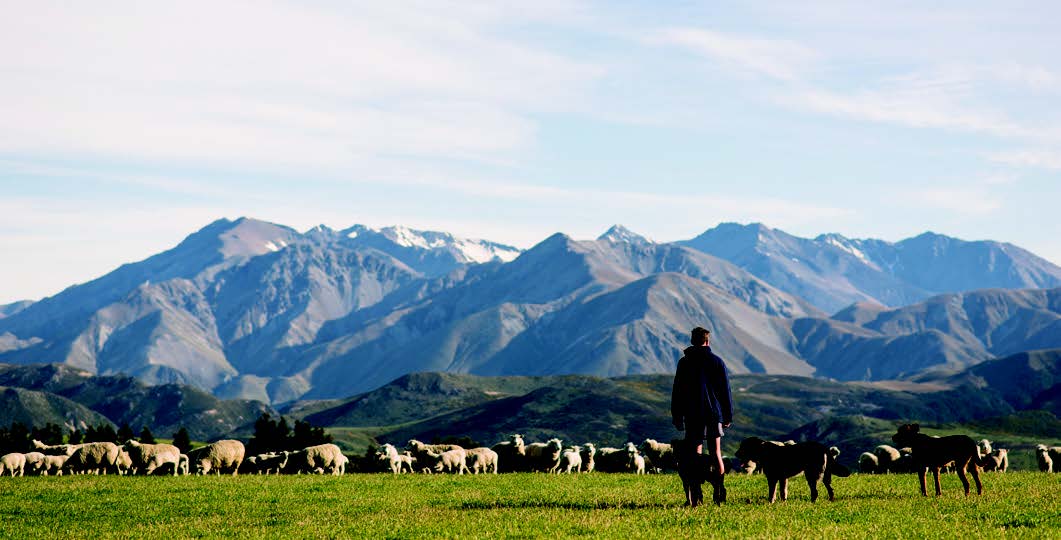
Bert with Wairere bred Kumanu lambs and ewes.
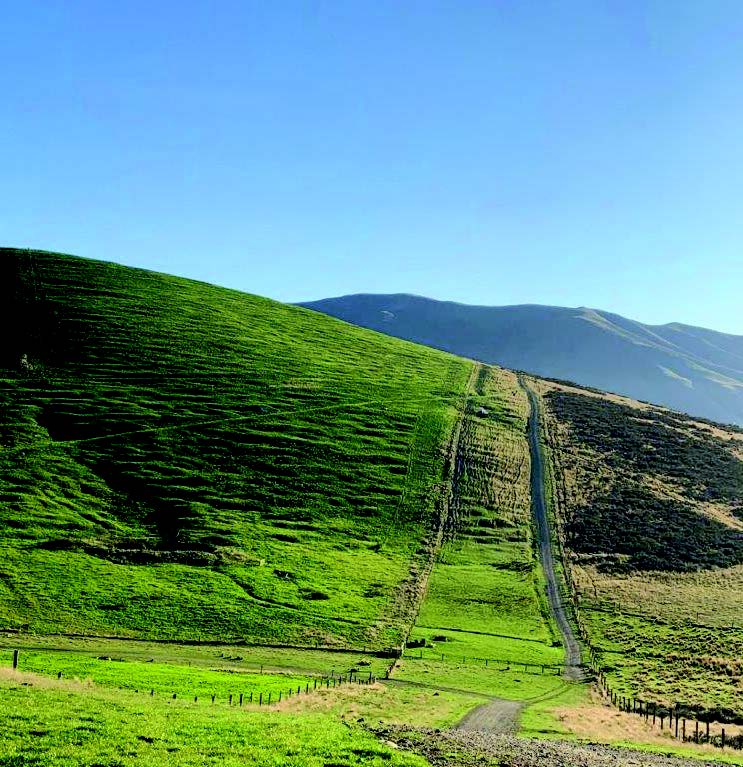
Legume development contrast
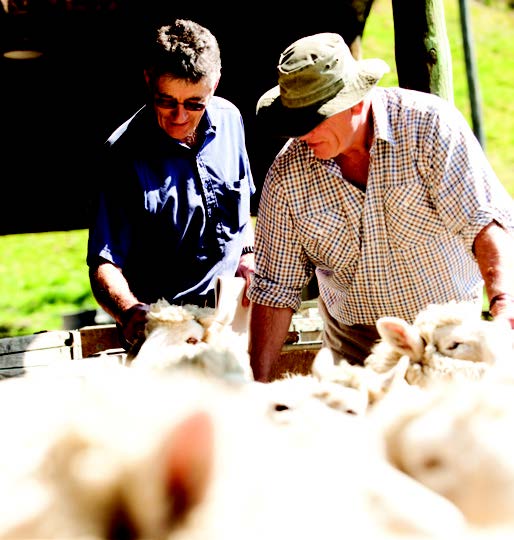
Chris Mulvaney and John Chapman checking body condition score.
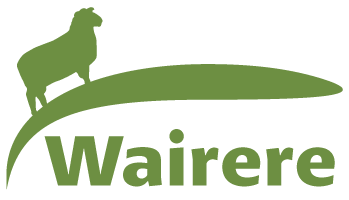
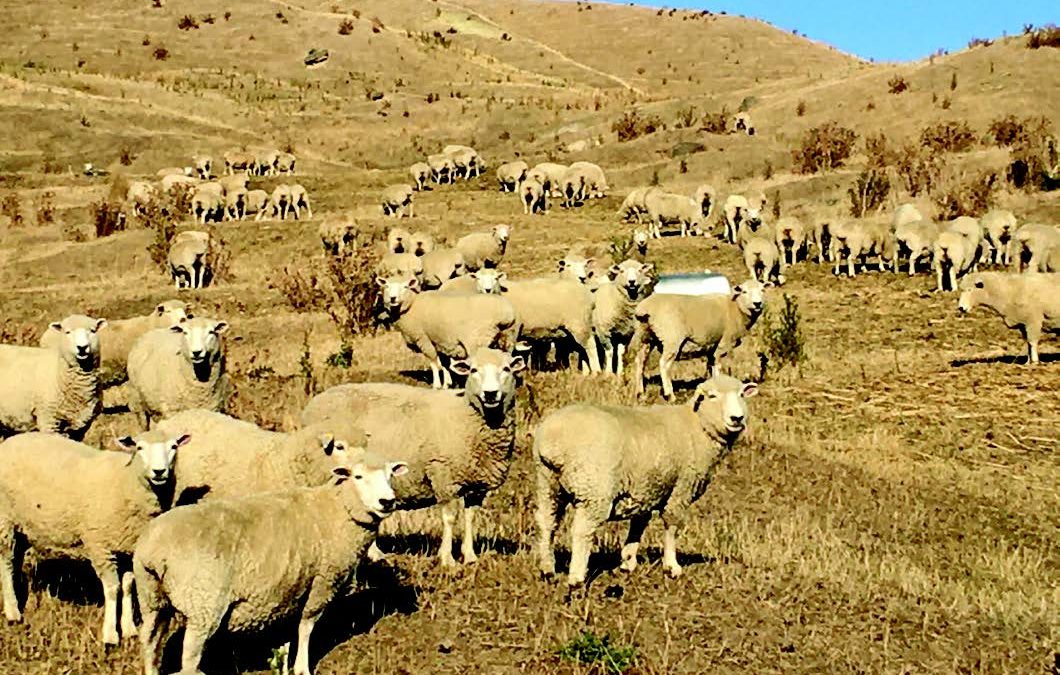
Hi, I’m from N. Ireland, I’m a sheep farmer, a steel erector and Cladder. I farm my cross bred ewes very intensive have a lot of overheads and a small profit. I came across the N.Zealand way of sheep farming on u tube and been very impressed. Last ewe I bought 50 nz Romney ewe lambs and mated them with an Irish breed called a Belclare. They lambed outside in mid May with very little help and with no meal. I had only one problem, 3 or 4 put their reids out before lambing. This year I’m going to Uk to buy a NZ Romney ram.